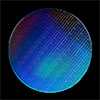Jan 27, 2022 (Nanowerk News) Like the transistors in a classical computer, superconducting qubits are the building blocks of a quantum computer. While engineers have been able to shrink transistors to nanometer scales, however, superconducting qubits are still measured in millimeters. This is one reason a practical quantum computing device...
Scientists explain mysterious finger-like features in solar flares
Jan 27, 2022 (Nanowerk News) In January 1999, scientists observed mysterious motions within a solar flare. Unlike typical flares that showed bright energy erupting outwards from the Sun, this solar flare also displayed a downward flow of motion, as if material was falling back towards the Sun. Described as “downward-moving...
Sustainable electronics reduce environmental load and enable new applications
Jan 27, 2022 (Nanowerk News) The environmental load of the electronics industry can be significantly reduced by moving from traditional manufacturing processes to printed electronics and from fossil-based materials to bio-based materials. By using printing processes, up to 90% of fossil materials can be replaced in some applications. At the...
A new structured thermal armor achieves liquid cooling above 1000 C, overcoming challenge of Leidenfrost effect
Jan 27, 2022 (Nanowerk News) A research team led by scientists from City University of Hong Kong (CityU) has recently designed a structured thermal armour (STA) that achieves efficient liquid cooling even over 1,000 °C, fundamentally solving a 266-year-old challenge presented by the Leidenfrost effect. This breakthrough can be applied...
Rare Kondo phenomenon found in transition metal oxide, furthering decade-long debate
Jan 27, 2022 (Nanowerk News) As temperature decreases, so does the electrical resistance of metals — most of the time. In metal with magnetic impurities, electrical resistance can increase as the temperature drops due to a strange phenomenon called the Kondo effect. Caused by quantum interactions between the magnetic impurities...
New anti-reflective structures will improve the performance of telescopes studying radiation from the Big Bang
Jan 27, 2022 (Nanowerk News) Scientists from the Kavli Institute for the Physics and Mathematics of the Universe and the University of Minnesota, Tomotake Matsumura and Shaul Hanany, and their collaborators have made a new type of optical element that will improve the performance of telescopes studying radiation from the...
Enhancing the energy storage capacity of graphene supercapacitors via solar heating
Jan 27, 2022 (Nanowerk News) Prof. WANG Zhenyang's research group from the Hefei Institutes of Physical Science (HFIPS) of the Chinese Academy of Sciences (CAS) has enhanced the energy storage capacity of graphene supercapacitors via solar heating. Related research results were published in the Journal of Materials Chemistry A ("Enhancing...
Eco-friendly micro-supercapacitors using fallen leaves
Jan 27, 2022 (Nanowerk News) A KAIST research team has developed a graphene-inorganic-hybrid micro-supercapacitor made of leaves using femtosecond direct laser writing lithography (Advanced Functional Materials, "Green Flexible Graphene-Inorganic-Hybrid Micro-Supercapacitors Made of Fallen Leaves Enabled by Ultrafast Laser Pulses"). The schematic illustration of the production of femtosecond laser-induced graphene. (Image:...
Revealing lithium metal’s electronic structure
Jan 26, 2022 (Nanowerk News) Spectroscopy at the Advanced Light Source (ALS) and theoretical calculations at the Molecular Foundry revealed the intrinsic spectroscopic signature of lithium metal and explained the origin of previous contradictory reports. The findings (ACS Applied Materials Interfaces, "Controlled experiments and optimized theory of absorption spectra of...
Maize and milk proteins can replace fossil fuels and metals in the production of nanostructured surfaces
Jan 26, 2022 (Nanowerk News) Nanotechnology can be found almost everywhere in our daily lives, although it is nearly impossible to see. Nanostructures are materials that have been processed at the atomic level to obtain desired material properties. They are used, for instance, in electronics, diagnostics, and as surface treatments...










